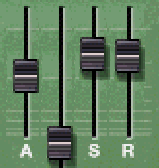 Written Works (by Ian Applegate) Written Works (by Ian Applegate)
{--} [ -- ] {{ == }} [{--==--]} [{(--++==)}] [{--==--}] {{==}} [ -- ] {{ == }} [{--==--]} [{(--++==)}] [{--==--}] {{==}} [--] {--}
This is a list of writing projects that I have worked on and completed, to some level or degree. The levels of completion are listed in white.
Series One.
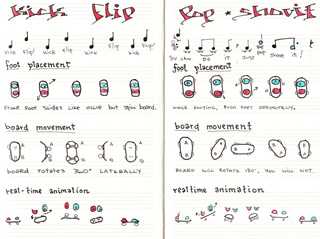 Skate Board Music. Skate Board Music.
(100%, micron on moleskine, 100p total)
This is a book about skateboarding, written on sheet music. It alludes to an invention currently under patent pending, as well as teaches kids how to skate. Keep it in your back pocket and it will save your behind! Sections included:
Aerial Board Control (parts depicted in image)
New Invention: Spring-Loaded Trucks
Fulcrum Proportions and Weight Distribution
Math Concept: The Antipercent
Click here for the album that goes with it.
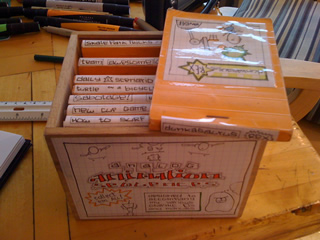 Flip Book Series One. Flip Book Series One.
(100%, micron on rhodias, 80p ea. series of 5)
This is a series of hand-drawn filpbooks. Concepts in the flipbooks work with themes from other parts of my work-
Dunkasaurus Rex
The Cup Game
Turtle On A Bicycle
Team Awesome
How To Surf
Click here for the original flipbook series one webpage.
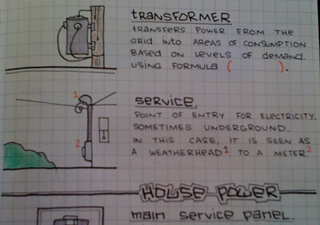 Solar Education (25%, micron on moleskine) Solar Education (25%, micron on moleskine)
This is a guide to solar electricity. I am a licensed solar electrician with the state of Connecticut, and I'm working on a national certification known as NABCEP.
The book deals with solar electricity from perspectives that are currently not acknowledged enough: the consumer (not the do-it-yourselfer), and schools. It includes exercises and lessons about how to understand the solar electrical system on your home, or your neighbor's home. Also includes academically proven formulas which predict the proliferation of solar electrical systems to the point of mainstream existence.
Kid Analog Cartoons
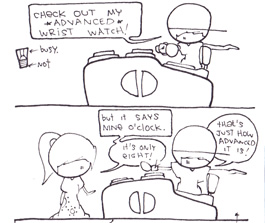 The Bean (as finished as 30% maybe) The Bean (as finished as 30% maybe)
This is a series of one-liners and short plots of several pages reminiscent of a classic comic strip. The Bean is about Coffeeshop Culture and focuses around several characters based on real life. Most of the cartoons culminate from years of coffeeshop experience in the Yale University community, serving both faculty and student alike. Guest appareances by Howard Dean, Zinn, and Bloom. Or is that Harold? We can't remember names at the Beanery but we sure can improve our tips with cup flips. Flipbook from Series One works with this.
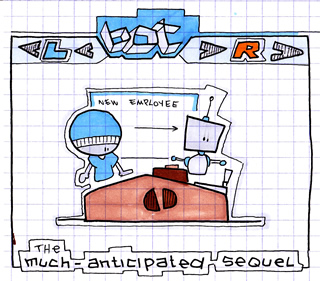 The Bot (as finished as 30% maybe) The Bot (as finished as 30% maybe)
"Kid" from the Bean decides he's tired of working at the coffeeshop. He has read "Composition" and "Performance," and decides he wants to make music instead of work at the coffeeshop. So he also finds a book on how to build robots (which is not actually written but alluded to in the book). The bot is built primarily so that the kid does not have to work at the coffeeshop, but Kid accidentally shows the robot how to make music in addition to how to operate the espresso station. The Bot propels himself into popularity by playing a few shows accidentally, and the world at large finds a robot who can play music as something of a novelty. Eventually Kid learns an analog instrument from Socrates and meets back up with the Bot, who was once his best friend. The two of them make the most excellent music ever.
This book is accompanied by a series of songs like "My Robot Ran Away" and "Document One," the first song the robot ever made. "THE BOT" works highly in tangent with certain sections of "Composition."
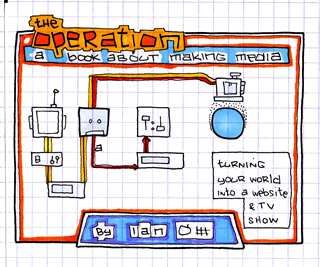 The Operation (as finished as 30% maybe) The Operation (as finished as 30% maybe)
"Kid" has two human friends who help him produce a show on Public Access. The FBI is in cahoots with the FCC who is controlled by MTV. So there are "agents" who are trying to stop the kids from making their show, because it's taking away from the Neilson ratings of the syndicated programs on major networks in the local area of New Haven, Connecticut. What happens next is even better. The kids have to take a road trip and travel via internet to several different cities across the country. They avoid YouTube completely, because of problems that Dan has with the resolution and quality, as well as the dilution of their works with the rest of the world's videos. Eventually they build a network of cities across the United States who participate in this tape-swapping program, and they find a way to support the tape-swapping with carefully selected advertising and Federal funding from volunteer educational programs. This is the foundation of the next major cable television network.
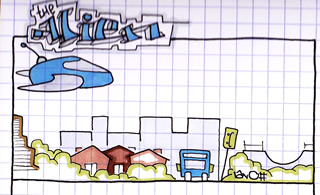 The Alien (conceptually completed but unwritten) The Alien (conceptually completed but unwritten)
We find out much later in the series that "Kid" was actually discovered by Kai and Dan in Edgewood Park. It turns out that he doesn't have a regular name because he is actually from outer space. His spaceship is built from parts that resemble stereo equipment. There is a switch that looks like a volume fader, and it adjusts accelleration. Objects in space are translated by the ship's navigation system as sound, so the Alien essentially has to DJ his way through outer space. The rest of the story involves the KID's eventual integration into society, complete with odd blunders and misconceptions; generalizations capable of only being made by a creature from another planet.
Audiomatic Expressions (conceptually completed but unwritten)
How to produce and compose and perform music via the means that are available today.
Novels
Mainland (prequel to Barista) (100%, micron on lil phat notebook, 100p)
Recently began transcribing the novel to a moleskine notebook, complete with interesting handwriting and illustration. It's a story about a group of kids who live in a town together, and the characters are based around the same environment as The Bean. Puella, Roeur and Gaston are three children who live in the capital city of the Mainland. It's a story about social progress and change; about class and wealth and poverty and misconception.
Device (50%, micron on lil phat notebook, 100p)
Book about an inventor and a psychologist. The psychologist gives the inventor a pair of video goggles he obtained from the University for a patient he had who was visually impaired. The video goggles proved to be very interesting to the inventor, who goes on to impliment different techniques. First, he learns how to construct additional images into the picture of the goggles. Transmitters deliver a signal which delete the nearby object and replace it with a three dimensional image. The first three of these shrouds are innoculous
Phiction Trilogy (all in my head, currently)
This is a story about a teenager who is raised in New Haven, and meets a guy named Chad while working the cashier position at a vegetarian grocery store, back in 1996. Chad works for a guy named Jonathan, and makes friends with
the cashier Edition One is posed as a diary of the stated main character, who has yet to be named.
Philosophy
Choice Construction (50%, micron on 5-star notebook, 50p)
This is a guide on how to write choose-your-own-adventure novels. It maps out several different writing techniques for designing multiple-reality storylines. It contains language and comparison to computer coding (if:then/and:or statements) and recommends techniques both for print and for hypertext development of non-linear plot.
Analogian Theory Of The Universe (50%, micron on 5-star notebook, 50p)
Uses Einstein's "Theory of Relativity" to prove that the universe never ceases to exist, but shifts between three different points of extremes. Also postulates that suns digress into black holes, a concept that is currently not accepted by modern science.
|